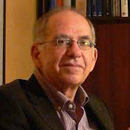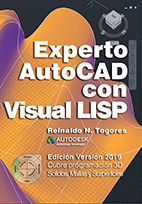Many extremists once thought that Cuban Revolution's architecture was something completely original and had no relationship with the rest of the world's architecture. We know this is not true but ... how did you then see that relationship and how do you see it now with the passage of time?
I wasn't acquainted with any of those extremists. I imagine that controversy is something newly invented. The controversy in our time was a different one, which was very well described by Professor Rallo:"...two main trends have been noted in post-revolutionary architectural work. A pragmatic, positivist, technocratic, pseudorationalist trend without major conceptual base or aesthetic intentionality, which has promptly dealt with the urgency of the impending tasks. Their motto could be: many cubic meters of production that will not collapse, that wont cost much, that will outdo completion deadlines. Quantity, in short... The other trend is more complex and corresponds to a culturalist or aestheticizing approach to Architecture."As for me I have always believed in Architecture and Design's role in the transmission of cultural values. Back in 1961 I wrote as part of the argumentation for one of my school assignments (I cant remember if it was in Gottardi's class) that "good design is, at least, a lesson in order."
(Source: Roberto Segre, Arquitectura y Urbanismo de la Revolución Cubana, Havana, 1989. p. 32)
in my first year as a teacher of Basic Design my classes were focused on the different aspects of meaning in architecture. Architecture has always tried to convey a message. The success of my Vocational School which led to Fidel Castro describing it as "the best school in Cuba" maybe is due not so much to its functional qualities (ultimately the projects for dormitories, classrooms etc. were the same for all Giron schools) but to the way the project managed to embody an utopian understanding of the world. Said so, it might seem that the architect's work is merely that of a propagandist at the service of the powerful. But undoubtedly within that worldview were elements universally valid from a human point of view that many of us shared. But in order not to disperse ourselves, the answer to your question: architectural practice has always been (and will remain) everywhere the same.
The Camagüey DOCOMOMO group sees a close relationship between the plan and the volumetry of Gropius' Bauhaus in Dessau and the plan and volumes of the Cuban countryside schools built with the Giron system. If we abide with the concept of Gropius' Bauhaus mega-building, is it not the Camagüey Vocational School that concept's apex?, is it not our school, strictly speaking, the German Bauhaus carried to its ultimate consequences, magnified and reinterpreted in another society, with different intentions, in another time, under different weather conditions... and also political (excuse me for joining both terms)?. What do you think about that?
I've never felt identified with Gropius, but I have with Hannes Meyer's Bauhaus. Here we must distinguish two aspects: a purely formal one, the purity of the prismatic volumes and their orthogonal articulation, which was undoubtedly a much closer reference for my generation than to yours. The resources we had at our disposal, the Giron system, favoring such solutions. On the other hand, what for me had the most importance, the value that Hannes Meyer gave to the role of architecture as a tool for social transformation:"thus the aim of all bauhaus work is
to bring together all vitally creative forces
so as to give harmonious shape
to our society."
(Hannes Meyer, in his 1929 poem, Bauhaus und Gesellschaft)
Regardless of what you've already said in other interviews, it is important for us that you explain, grosso modo, the fundamental concept on which your design was based, especially the concept of the ensemble, the complex's urban conceptualization.
Fui de aquellos adolescentes que a fines de la década de 1950 creían en la posibilidad de un mundo mejor. I believed in the power of Design and Architecture as the tool that would help in creating it. When I undertook the Vocational's project a scheme such as the phalanstery Fourier had conceived to host his ideal society came to my mind: three parts, one central and two lateral wings. The central part dedicated to study and reflection, the lateral ones to everyday life.
The central axis, I would devote to common use cultural facilities, library, museum, theater, art and dance classrooms... further back the gym.
As for the side wings, the Junior High School to the West, to the East the Superior High School. This symmetric layout is disrupted by the unequal capacity in each of these wings, higher in the Junior, lower in the Senior High School...
Here, a tension is generated, the static circle is broken, the dynamism of the spiral arises. Two movements emerge:This spiral suggests yet another impulse, sucking the exterior space, right where the main entrance plaza.
- one of expansion in a northeast-> southwest direction, the building masses open, expand, decompose. It is formally expressed in the stairs nucleus at the Western end of the Junior High School classroom building. This is evident when compared to the one to the East of the Senior High School.
- other one in the sense of the two half spirals in north->south direction, impacting against the central axis, where classroom buildings collide, concentrating, densifying onto the laboratory tower blocks. Gallery balconies disappear and everything becomes a dense, closed mass.
Other than these clarifications I quote what I stated in my 1991 presentation mi ponencia de 1991:In these schools much is given to us beforehand. First, the prefabricated building system. This set of components and the way assemble them(21) was developed specifically for the rural school buildings plan. Its design only takes into account strictly technical parameters. We don't believe any symbolic intention prevailed in its authors. But sometimes the most eloquent symbols await crouched in the collective unconscious. This is the case with the 'Girón system' and certainly part of its undeniable merit regarding an adequate characterization of these buildings. Indeed, the schools building plan of the seventies is nothing but a disproportionate effort in building Utopia. The means and the ends are very much alike those postulated by people like Owen and Fourier: the creation of a new man through life and work in community. However UTOPIA etymologically considered means non-place, a place that is not. An architecture of utopia's relationship with its locus shall be very special. Schools that do not occupy a place, buildings which levitate, raised above the slight imprint of their pedestals, barely touching the ground. The architecture of u-topos is an architecture without toponymy and without topography . An architecture without toponymy is an essentially ubiquitous architecture: multiple object par excellence. Without topography that is discounted as a negative cipher from a 0.0 structural level, ideal plane to which one ascends by stairs simply supported, without continuity with a structure they barely tarnish, a transient concession to the contingency of its terrestrial anchorage. An architecture that will seek its fulfillment as a topology in which the program for a minutely regimented life is embodied.'The peculiar feature of the language of art' -according to Lévi-Strauss- 'is that there exists a profound homology between the structure of the signified and the structure of the signifier'(22). This is especially evident in projects such as those carried out for the school building plan. In our project for the Maximo Gomez Vocational School(23) we had to take into account the full range of conflicting requirements that come into play from the complexity inherent in a program of such magnitude. Including a series of common use facilities for the totality of its 2500 students, the school should however provide conditions for the relatively independent operation of two different school levels, high school and senior high school. The school would be located in the city, but without being a part of it; its students were to be linked to both agricultural and industrial work.The institutional regulations called for collective activity while individual personality has always required moments of intimacy. The training received at school would be comprehensive, but its purpose was to promote the students' interest in science and technology. The building system and functional solutions had to be those mandatory for the national school building plan, but the representative character of this one school as a symbol of the province's achievements and aspirations demanded a physiognomy of its own. All this found expression in the particular arrangement of the buildings and the range of meanings implicit in its architecture.The project was organized around a central axis which grouped the common use facilities and two sectors on either side of this axis that would correspond to the two school levels. The bilateral symmetry is only approximate since it must accommodate to a number of factors, among them the construction sequence which provided for the phased implementation of the project, the need to include the cooking and dining facilities in the first stage, the presence of an outdoor amphitheater which was also intended for activities of the neighboring city but that should not interfere with teaching activities and finally, the difference in the number of students, higher in high school than in senior high school. In addition we felt that from a formal point of view an overly strict symmetry would reinforce the duality of the layout at the expense of its unitary perception.This unity is evident, from the inside, in the articulation of squares and other areas between buildings which assume diverse functions depending on the characteristics of their surroundings. From the outside this unitary character is strengthened by emphasizing the central core through the concentration of built volumes, the greater complexity of its geometry and its careful characterization. The focus on science expresses itself in the location in the prominent position within this core of those facilities to them dedicated: the laboratories, the computer center, the library and the museum, built using the same prefab system but with an idiosyncrasy of its own incorporating certain constructive elements designed specifically for this project. Among them special attention is deserved by the guardrail panel system that characterizes the grid in which the buildings are inserted and establishes an autonomous plane of interconnection not dependent on the site's topography. The central core includes the school's main entrance. It not located facing the access road, instead it is oriented sideways, conforming a ceremonial space which culminates in the equestrian statue of the Generalissimo by the sculptor Delarra. This space is a square and at the same time an entrance, reinforcing with this ambivalence, inner space / outer space, the sense of a relatively closed autonomous communityThe use of color deserves a special mention. Used as an accent, it helps in prioritizing the central axis stressing in particular the laboratories with big chrome yellow wall sections. In the standard dormitories color is used to solve the contradiction between the openness and relief of the longitudinal façades with their continuous windows and cantilevered balconies, and the poverty of the buildings' extremes, totally flat and closed. The red and violet on the balconies -protruding both as perceptual code and physical reality- are continued on the building extremes' facings, as do the blue and green from the windows -back physically and as perceptual code- giving rise to a dual reading -physical plane vs. coloristic code- in which the suggestion of relief prevails.
What do you think about the Cuban educational system during the Revolutionary period?, in your opinion, where do the the vocational schools fit in this educational system?, and what you think has been their contribution to the Cuban people's education?
It was a very risky bet. In retrospect I think the disproportionate investment made in the construction of schools at the expense of other investments in productive infrastructure is one of the causes of the present economic situation. Of course it is easy to say it now. But then the collapse of the communist block and with it the demise of the Soviet subsidy was not foreseeable. But if that strategy we now see as wrong had not been followed the Vocational Schools would never have been built. I believe that several generations of young people who may one day make a difference have been educated there.
What impositions prevented you to fulfill all of your ideas in the design of the Camagüey Vocational School?, what remained to be done?
I don't believe I've been limited by impositions. In fact, I skipped many regulations thanks to the local support from Robertico Valdes, then head of the Construction Ministry in the province, and also from people like Neque, the head of the construction brigade and his workers, always ready for any extra effort. And from local political structures, beginning with Raul Curbelo, the Party's Secretary. The program was met, even if it meant remaining on site day and night during the last months, giving express solutions when what had been originally proposed could not be completed within the deadline.The only limitation then was that my boss was tired of me spending all the time in Camagüey, but I then resorted to my pending holidays to have it my way.
What was the mood of everyone involved in the construction of school?, how was the teamwork, including the design, building and government parties?
I believe this has been answered in the question above.
In your opinion, what is the greatest urban-architectural achievement of the Camaguey school?
That I would leave to the critics. To posterity.
Would you consider the possibility of personally directing an eventual restoration of the complex?
Nothing would please me more, but I doubt that current economic limitations will allow it. And I'm already a rather old man, so I don't entertain any illusions.





